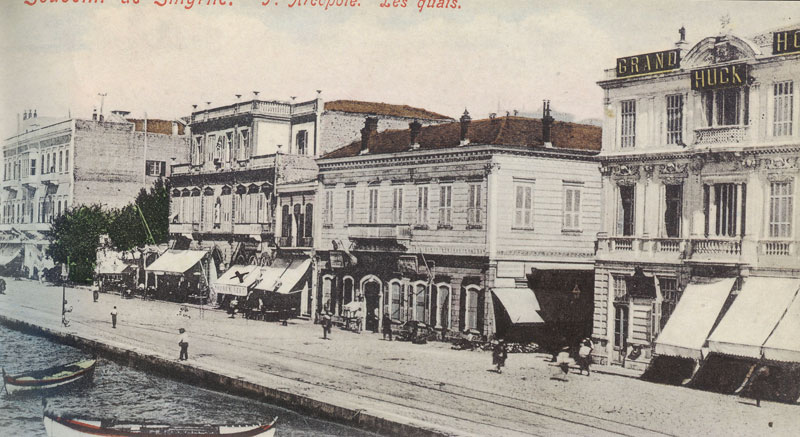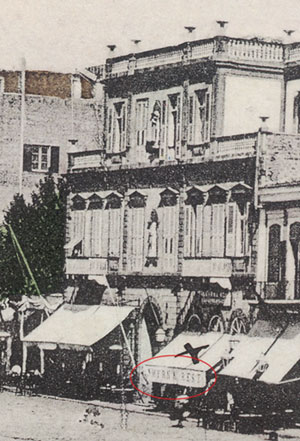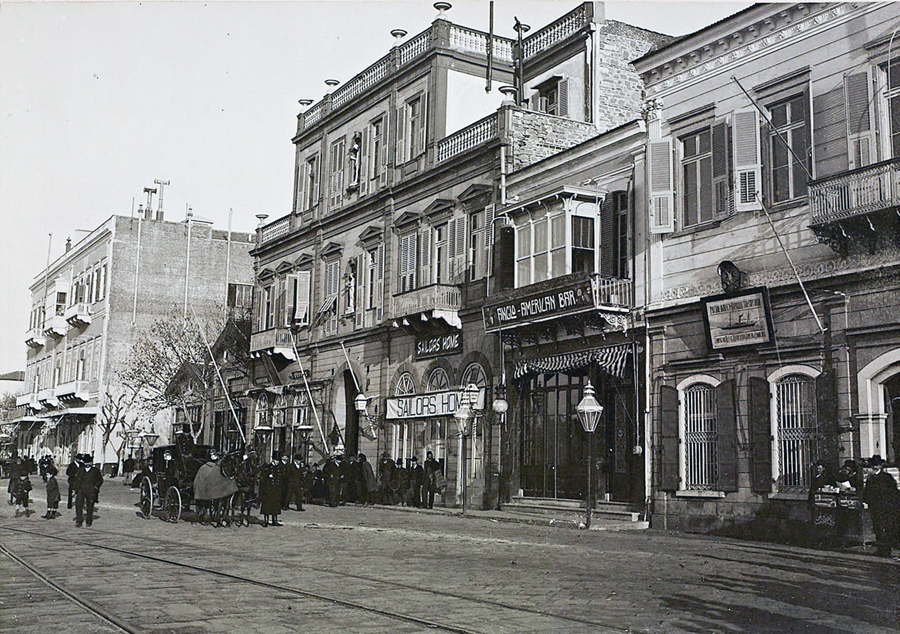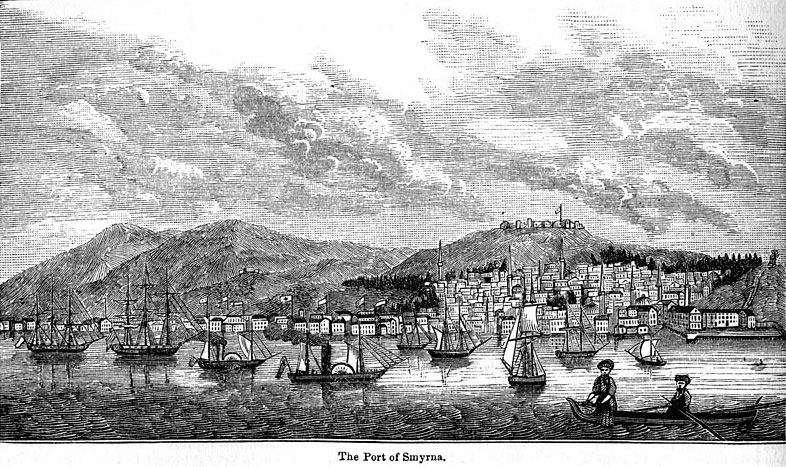Smyrna Rest: The Birth of the Greek Evangelical Union in a Coffee-House in Alsancak (1880-1913) Funda Adıtatar*, 2012 |
|
Historical records of Smyrna indicate that in the 1830’s the Seaman’s Friend Society was active in the city and ran a cafe on the coast with the name of ‘Smyrna Rest’ where seamen could stay and pray and in addition they possessed a ‘Rest Boat’ to recover escaped seamen1. Till the 1850’s this centre acted as the centre of Protestant missionary activities targeting the Greek and Jewish members of the community; however the lack of success in this proselytising meant the central role was then taken over by the Constantinople centre. Smyrna Rest was forced to close down through the intervention of the Orthodox Greeks of the city and the Ottoman authorities.
In the 1880s there is a renewed push for Protestant missionary activities in Smyrna. In this period Smyrna rest is operated on the quay by two English ladies, Miss Grimston and Miss Armitage. For a while these ladies operate the coffee house in the customary manner; however by 1883 they had expanded the premises with a large room on the ground floor to be used as a prayer room the called ‘Salle Evangélique’. A Greek convert officiates in the masses here and invites through his Greek oratory Orthodox Greeks to the Protestant path2. While Smyrna is the main focus, other satellite branches are established in Manisa, Bayındir, Ordu and Semen (post 1901 known as Akhisar) there is a growth in the Greek Evangelical Union whose centre remains the Smyrna Rest. Smyrna Rest is mentioned as a ‘coffee-house’ both in British Consular reports and Ottoman archives.3 In later years the Greek Evangelical Union reports state that they had opened a Rest in Smyrna.4
These developments centred in this coffee house demonstrate the rivalries and tensions between the three powers: Protestant missionaries working under the consular protection of the British Government with a mission to ‘civilize’ the Orthodox worshippers, and the Orthodox Church which didn’t want to lose any blood faced with this ‘mission’ and caught in between the Ottoman government losing power yet striving to modernise in the world stage. This report of which this is a summary seeks to analyse this inter-communal rivalry and machinations, social and political relationships and the spread of the Protestant faith amongst the local Greek community. In addition by studying the history of Smyrna Rest one of the aims was to add to the overall story of Punta / Alsancak. For this research Ottoman and British archives, observations of travellers and missionaries past and the printed yearly reports of the Greek Evangelical reports were made use of.
1 S.W.H. Bird, And Unto Smyrna : The Story of a Church in Asia Minor, London: James Clarke & Co., undated, transmitted by Esra Danacıoğlu, a.g.m., p. 269.
2 The National Archives /FO/195.1586.9 - Correspondence between the Izmir British Consul Dennis and Istanbul Ambassador Sir William White (in office 1886-1891), Izmir, 26 March 1887.
3 Başbakanlık Osmanlı Arşivi [Prime-ministerial Ottoman Archives] Yıldız Sadaret Hususî Maruzat Evrakı, 201/22 1304 B 6.
4 Seventeenth Annual Report of the Greek Evangelical Union, Londra: Millington Bros., 1899, p. 2-3.
Biography:
Since 2000 I have been a lecturer at the Izmir Institute of Technology Department of General Cultural Courses and before that was a history teacher at the National Education Ministry, Turkey. My primary research interests are in the nineteenth and early twentieth century; urban history, social, economic and administrative history of the late Ottoman provincial areas.
My publications to date are: ‘İzmir İngiliz Başkonsolosluğunun Askerî İstihbaratı’ [The Military intelligence at the Izmir British Consulate], Ege Üniversitesi Tarih İncelemeleri Dergisi 26/1 (July 2011): 1-35 - link and ‘İzmir İngiliz Konsolosluğunun Siyasi Faaliyetleri Kapsamında Ermeni Meselesi’ [The Political Observations at the Izmir British Consulate with reference to the Armenian Issue], Tarihin Peşinde Uluslararası Tarih ve Sosyal Araştırmalar Dergisi, V (April 2011): 57-70.
My papers and presentations to date are: ‘İzmir İngiliz Konsolosluğu Raporlarında Trablusgarp Savaşı’nın İzmir ve Çevresinde Yarattığı Etkiler’ [The effects on Izmir and region of the Turco-Italian war of Libya as revealed in the reports of the British Consulate of Izmir], I.Uluslararası Tarih Sempozyumu, 16-18 May 2011; Türk Tarih Kurumu (in print), ‘Bir Osmanlı Bilimadamı ve Optik Kitabı: Takiyüddin, Işığın Niteliği ve Görmenin Oluşumu’ [An Ottoman scientist and book of optics: Takiyüddin, the nature of light and how sight is achieved], 7. Ulusal Fizik Öğrencileri Kongresi, 19-24 Jun 2011, İzmir Yüksek Teknoloji Enstitüsü and ‘Smyrna Rest: Alsancak’ta Bir Kahvehanede Rum Evangelik Cemiyetinin Doğuşu (1880-1913)’ [Smyrna Rest: the birth of the Greek Evangelical Union in Alsancak (1880-1913)], Uluslararası Alsancak Sempozyumu: Medeniyetler ve Dinler Arası Dostluğun Semtinin Dünü ve Bugünü, 28 November 2012; Dokuz Eylül Üniversitesi DESEM.
 |
 |
 |
 |
